|
|
|
|
|
|
|
|
|
|
|||
|
|
|
|
|
|
|
||||||
|
|
|
|
|
|
|
|
|
|
|
|
|

|
Almost everything in Jane and Eddie's world has a barcode - even animals, which seem to have them growing on their skin, fur or scales. Even slugs have them. Reading barcodes is a skill that Eddie is surprisingly good at, and the Taxonomic reference to each and every animal does seem to be readable and have a logic, even if some of the information remains unknown. Eagle-eyed readers may have noted that everyone has barcodes growing out of their nail-beds. Quite why this might be so is as yet unexplained. But Barcodes are fascinating things, so here's a bit about barcodes in all their black and white glory..
Bar code Symbologies What all barcodes have in common is that they encode a set of numbers or letters as a series of spaces and bars. The method used to transform information into code is called a symbology. There are many different types of symbology or types of barcode. The type of barcode used depends upon what it is being used for - there are retail codes such as EAN 13 and UPC A. There are coupon barcodes, packaging barcodes and publishing barcodes such as ISBN. Shades of Grey has the following:  ISBN-10: 0340963034
ISBN-10: 0340963034ISBN-13: 978-0340963036 And in the USA: ISBN-10: 0670019631 ISBN-13: 978-0670019632 Scan of the USA barcoded ISBN The basic structure of a UPC bar code consists of a leading and trailing quiet zone, a start pattern, one or more data characters, optionally one or two check characters and a stop pattern. These barcodes also have a space on the far left and right which tells the scanner where to start and stop. There is also a "module Check" which tells the register if the code has been correctly read. 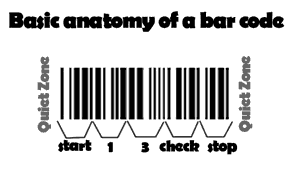
Barcodes allow a barcode reader to "read" the code. You may think that is is looking at the black bars - but it is actually recognising the spaces in between them. Scanners come in a variety of types. There are pen readers, laser scanners, CCD readers and the newest technology - digital video readers. The reader generally scans a light source across the bar code and measures the intensity of the light reflected back by the white spaces. This pattern of light is detected by a photodiode which converts the signal into a digital code. Most bar code symbologies mean that you can scan the bar code either way and it won't make a difference. History of the bar code The history of the development of bar codes is rather complex and confusing, but to summarise they were apparently first used to label railroad cars, but they became most prevalent with the growth of supermarket use for product identification. Very basically there seem to have had two main roots of invention. On the one side they were developed by Bernard Silver and Norman Joseph Woodland who took their inspiration from Morse Code. Woodland said that they just "extended the dots and dashes downwards and made narrow lines and wide lines". They then read the code using modified technology from optical movie soundtracks. Their patent for linear and bullseye printing patterns was finally issued in October 1952. US Patent number 2,612,994 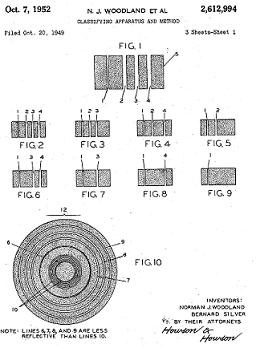
The other development was by David Collins who wanted to come up with a way of identifying trains as they moved around the railroad system. He came up with a system using blue and yellow reflective strips encoding a 6 digit company identifier and a 4 digit car number. The only problem with this system was that if any mud or dirt ended up across the reflective strips the accuracy of the reading was effected. It wasn't until the late 1960s that supermarkets in the States set up a project to develop a uniform grocery product code. At first it was thought that a bullseye code would work, but then test showed that the ink tended to run during printing. This was when Woodland's linear system proved itself - extra ink just made the lines taller and didn't spoil the readability. The UPC code was thus developed and in June 1973 a packet of Juicy Fruit gum was scanned at Marsh's Supermarket in Troy Ohio where the testbed was installed. This packet of gum is on display in the Smithsonian as the first commercial use of the UPC barcode. 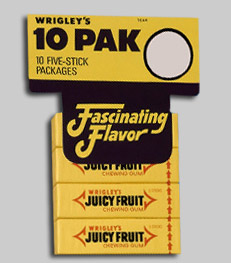
The first place to use the barcode in the UK was in Key Markets in Spalding, Lincolnshire - October 1979. Today almost every item bought from a supermarket or larger store has a UPC code on it. According to GS1 UK, the British branch of the global barcode regulator, there were 100 stores scanning at the till by 1984. It was 5,000 by 1991 and 10,000 two years later. By 1995, the figure was 20,000 and GS1 ceased bothering to count. Bar code Trivia There is a barcode as a number plate on the "Back to the Future" DeLorean at the end of the first film. The number sequence on the plate reads 136113966. There is a rumour floating round the web that Steve Jobs of Apple Mac fame also has a barcode numberplate, but it seems more likely that he has removed his licence plate and what is seen in the vehicles VIN number previously hidden behind the plate. 
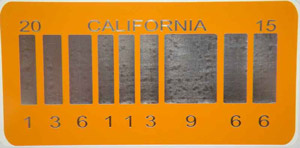
In Alien 3 Ripley (Sigourney Weaver) is stranded on a former prison colony planet, where some of the prisoners have found God and stayed on. Barcodes were tattooed on the back of prisoners' necks. Apparently the idea was a distant survivor from an early draft of the script written by William Gibson: "Only one detail survived. 'In my draft, this woman has a bar code on the back of her hand,' he says. 'In the shooting script, one of the guys has a shaved head and a bar code on the back of his head. I'll always privately think that was my piece of ALIEN³.'" 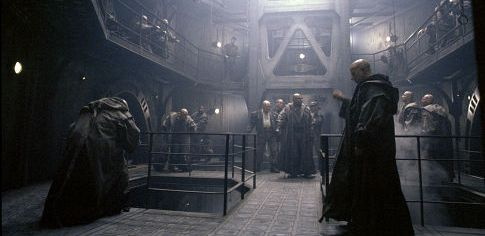
October 7th 2009 - Google celebrates the invention of the barcode with a Google Doodle - it says Google in Code 128 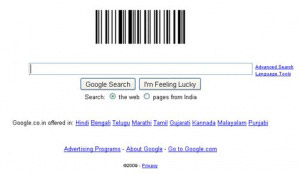
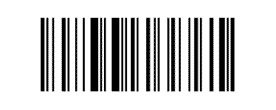
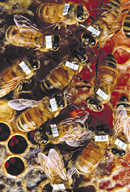 THE world's smallest barcode was developed by Dr Stephen Buchmann at the Carl Hayden Bee Research Centre in Arizona. Tiny tags were attached to bees to monitor their mating habits - each line of the code was one thousandth of an inch wide. The bar code label had to be miniaturised, lightweight (so as not to affect the bees' aerodynamics), durable, and provide first-scan readability.
To apply the labels, each bee was put to sleep for two seconds with a short burst of carbon dioxide, giving the researchers enough time to quickly glue a tiny label on the bee's back. A laser scanner mounted over the tunnel-shaped entrance to the hive then recorded their activities.
THE world's smallest barcode was developed by Dr Stephen Buchmann at the Carl Hayden Bee Research Centre in Arizona. Tiny tags were attached to bees to monitor their mating habits - each line of the code was one thousandth of an inch wide. The bar code label had to be miniaturised, lightweight (so as not to affect the bees' aerodynamics), durable, and provide first-scan readability.
To apply the labels, each bee was put to sleep for two seconds with a short burst of carbon dioxide, giving the researchers enough time to quickly glue a tiny label on the bee's back. A laser scanner mounted over the tunnel-shaped entrance to the hive then recorded their activities.
MAD Magazine had a huge barcode on its cover in April 1978 - Issue 198. It was accompanied by the heading "Mad hopes this issue jams every computer in the country...... for forcing us to deface our covers with this yecchy UPC symbol from now on." 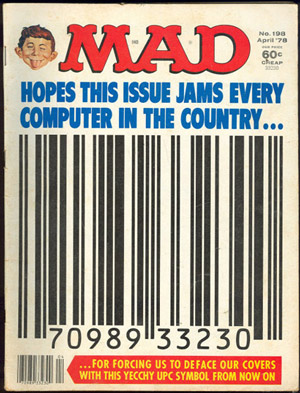
There is a barcode building in Russia, in St. Petersburg. The building is called 'Shtrikh Kod': Barcode. It is painted red and stands out on the bank of the river Neva. 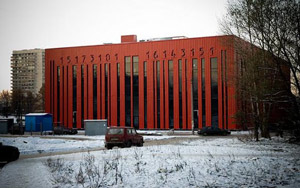
There is also a building near Sydney in Australia which looks like a giant barcode. 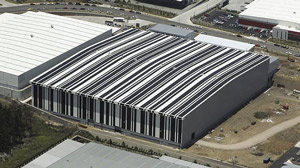
|